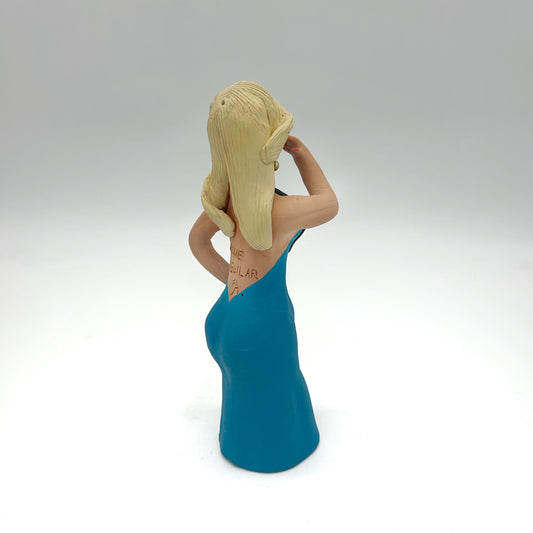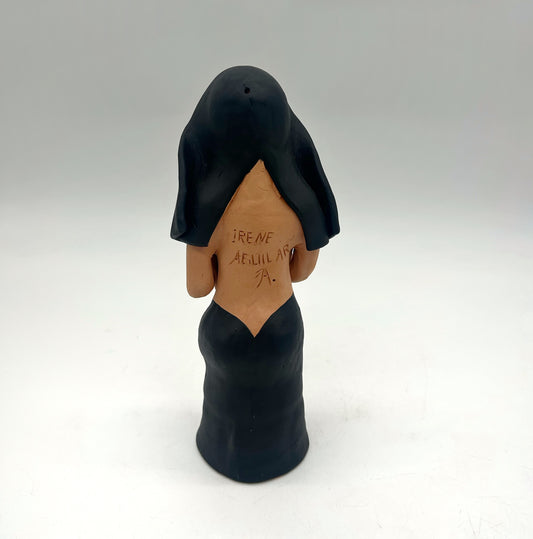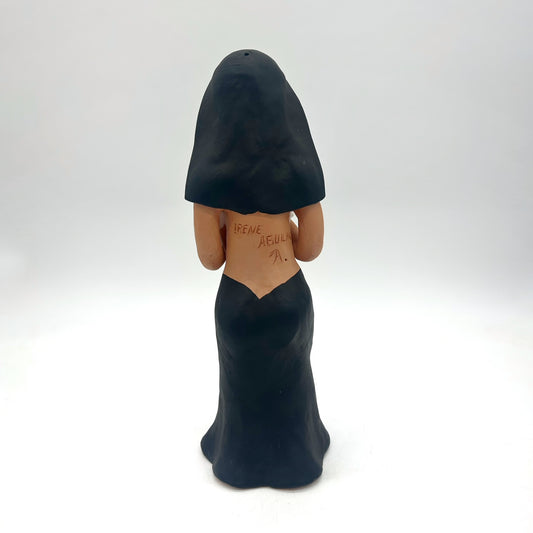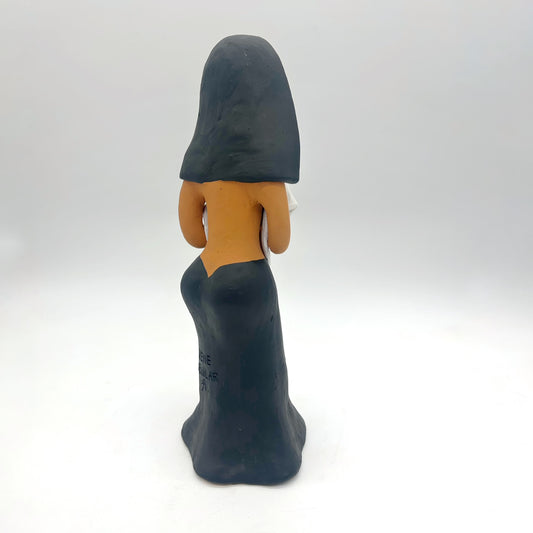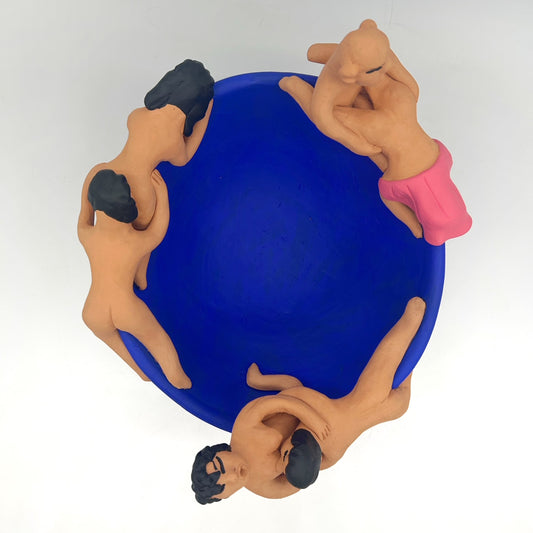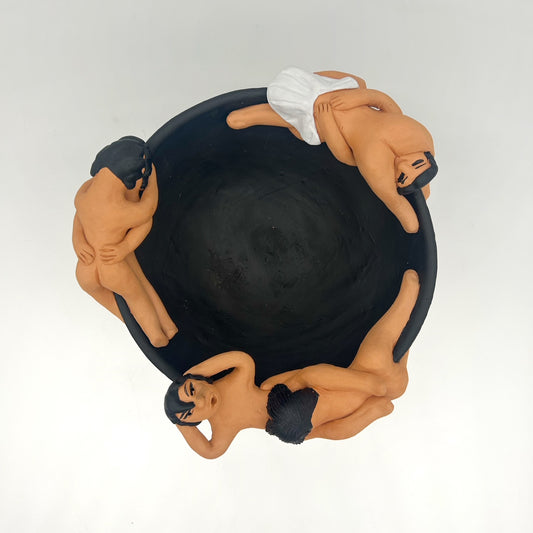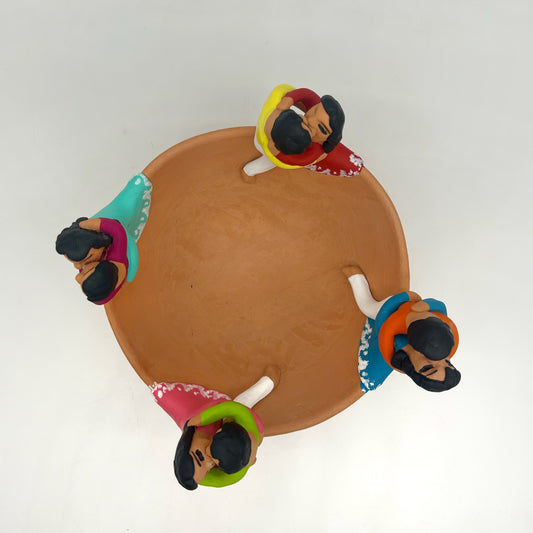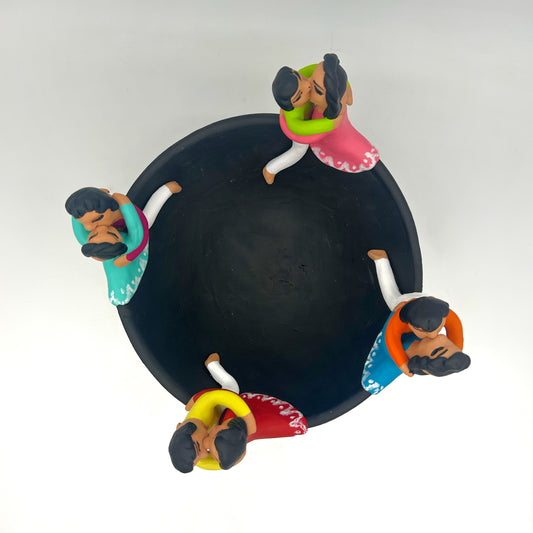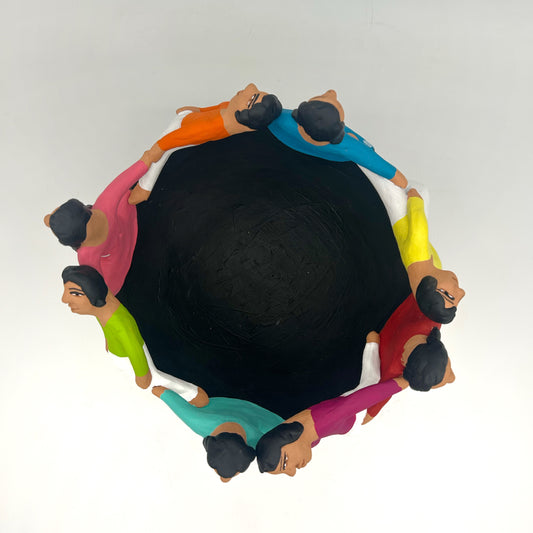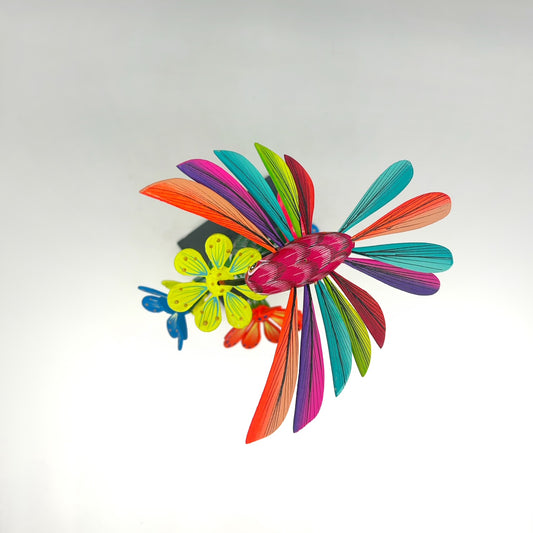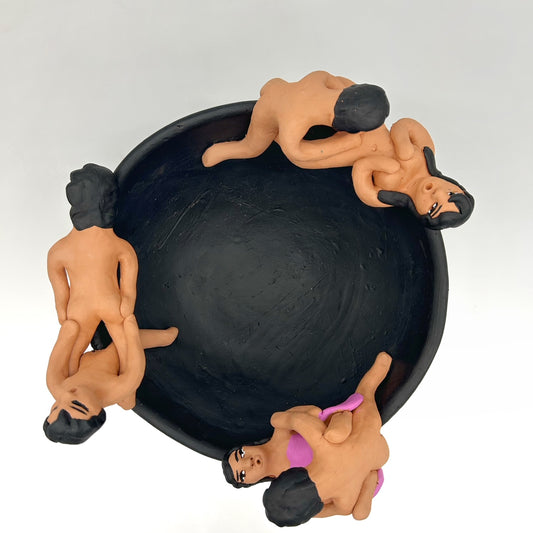Collection: Irene Aguilar
-
Irene Aguilar ~ Woman of the Night, small 8 1/2" x 3" x 3"
Regular price $55.00Regular priceUnit price / per -
Irene Aguilar ~ Topless Nun, small 8 1/2" x 3" x 3"
Regular price $55.00Regular priceUnit price / per -
Irene Aguilar ~ Topless Nun, medium 11 1/2" x 4" x 4"
Regular price $100.00Regular priceUnit price / per -
Irene Aguilar ~ Topless Nun, large 13" x 5" x 4 1/2"
Regular price $110.00Regular priceUnit price / per -
Irene Aguilar ~ Ceramic Sex Bowl, 8 1/2" x 10" x 9 1/2"
Regular price $195.00Regular priceUnit price / per -
Irene Aguilar ~ Ceramic Sex Bowl, 7 1/2" x 10 3/4" x 10 1/4"
Regular price $195.00Regular priceUnit price / per -
Irene Aguilar ~ Ceramic Wedding Bowl, 8 1/2" x 10 1/4" x 10 1/4"
Regular price $195.00Regular priceUnit price / per -
Irene Aguilar ~ Ceramic Wedding Bowl, 8 3/4" x 11" x 10 1/2"
Regular price $195.00Regular priceUnit price / per -
Irene Aguilar ~ Ceramic Friendship Bowl
Regular price $195.00Regular priceUnit price / per -
Juan Aguilar ~ Wooden Sculpture Hummingbird with Flowers, 14" x 7" x 7"
Regular price $175.00Regular priceUnit price / per -
Irene Aguilar ~ Ceramic Sex Bowl, 9" x 11 1/4 x 11 1/4"
Regular price $175.00Regular priceUnit price / per
Irene Aguilar ~ Folk Art Ceramics

Irene Aguilar Alcantara (daughter of Isaura and Jesus)
Irene Aguilar, third daughter of Isaura and Jesus, is known for her vivacious and imaginative spirit throughout her work. She creates ceramic pieces such as musicians, devils, monks, "women of the night", "Catrinas" -elegantly dressed female figures for Day of the Dead, and "Fruteros"- fruit bowls on the lips of which sit ain array of figures including lovers, the Three Kings and "Muertos" -skeleton figures engaged in human activities. In addition, she creates spectacular larger works, such as complex market scenes and flower stands with multiple parts.
Isaura Alcantara Diaz (who died in 1969 at the early age of 44) was the innovator-in collaboration with her husband, Jesus Aguilar Revilla-of an important and delightful genre of ceramics. He often sketched and painted creating new designs, some of which Isaura carried out. Departing from the utilitarian objects produced by their contemporaries in Ocotlan de Morelos (Oaxaca), they introduced decorative human figures. These imaginatively captured the daily activities, passionate expressiveness and cultural richness of pueblo life. Her highly detailed, colorfully painted human figure embodied its vitality figure embodied its vitality, depth, emotion and pulse. Women in indigenous garb were portrayed in every aspect of life: transporting their wares and possessions, displaying and selling their produce at market, nursing their babies, arranging their flowers, attending funerals and weddings, praying, sitting on park benches with their "enamorados" (romantic loved ones), and celebrating fiestas.
Isaura and her husband had a profound influence on the creative lives of all four of their daughters, Guillermina, Josefina, Irene and Concepcion (eldest to youngest), who in turn inspired their own children and grandchildren.
Irene Aguilar, third daughter of Isaura and Jesus, is known for her vivacious and imaginative spirit throughout her work. She creates ceramic pieces such as musicians, devils, monks, "women of the night", "Catrinas" -elegantly dressed female figures for Day of the Dead, and "Fruteros"- fruit bowls on the lips of which sit ain array of figures including lovers, the Three Kings and "Muertos" -skeleton figures engaged in human activities. In addition, she creates spectacular larger works, such as complex market scenes and flower stands with multiple parts.
Isaura Alcantara Diaz (who died in 1969 at the early age of 44) was the innovator-in collaboration with her husband, Jesus Aguilar Revilla-of an important and delightful genre of ceramics. He often sketched and painted creating new designs, some of which Isaura carried out. Departing from the utilitarian objects produced by their contemporaries in Ocotlan de Morelos (Oaxaca), they introduced decorative human figures. These imaginatively captured the daily activities, passionate expressiveness and cultural richness of pueblo life. Her highly detailed, colorfully painted human figure embodied its vitality figure embodied its vitality, depth, emotion and pulse. Women in indigenous garb were portrayed in every aspect of life: transporting their wares and possessions, displaying and selling their produce at market, nursing their babies, arranging their flowers, attending funerals and weddings, praying, sitting on park benches with their "enamorados" (romantic loved ones), and celebrating fiestas.
Isaura and her husband had a profound influence on the creative lives of all four of their daughters, Guillermina, Josefina, Irene and Concepcion (eldest to youngest), who in turn inspired their own children and grandchildren.
Out of a crowd on the zocolo in the heart of the city of Oaxaca, Mexico, emerges characters from the range of idiocentric individuals; a priest, a nun, a flower vendor kneeling with a bouquet of calla lilies, and a hot red devil leering straight at the viewer. You can almost hear these evocative clay figures sing and shout, chat and whisper. Playful, colorful, decorative, affordable, and always matte-glazed - these hand shaped terracotta figures are from master maker, Aguilar of Ocatlan de Morelos, Mexico. Her work can be seen in the permanent Girard Collection at The Museum of International Folk Art in Santa Fe as well in the book, Masters of Mexico.


